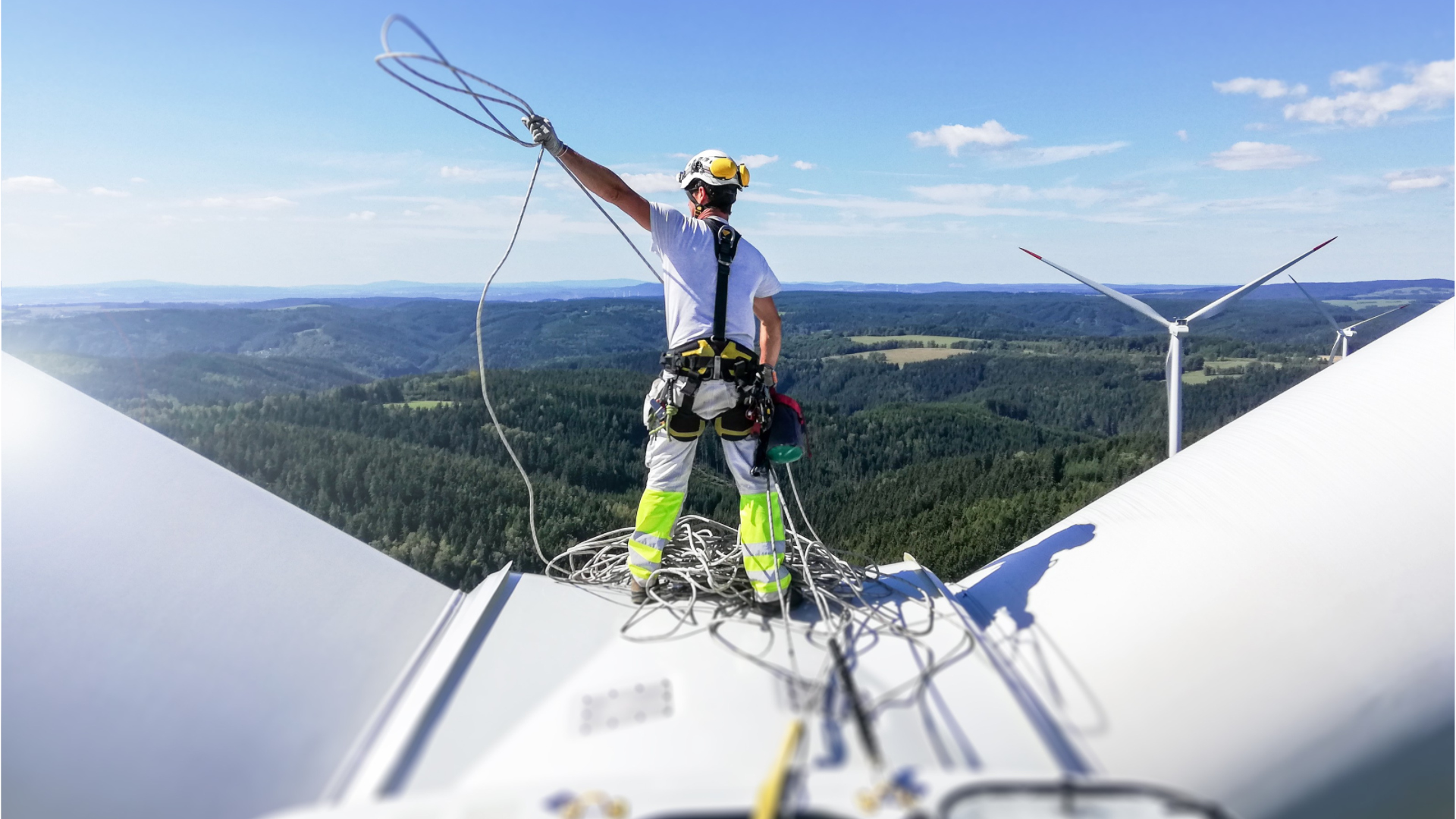Wind Turbine Service Technicians
Field Service Technician, Wind Farm Support Specialist, Wind Technician, Wind Turbine Technician
What they do:
Inspect, diagnose, adjust, or repair wind turbines. Perform maintenance on wind turbine equipment including resolving electrical, mechanical, and hydraulic malfunctions.
On the job, you would:
- Troubleshoot or repair mechanical, hydraulic, or electrical malfunctions related to variable pitch systems, variable speed control systems, converter systems, or related components.
- Perform routine maintenance on wind turbine equipment, underground transmission systems, wind fields substations, or fiber optic sensing and control systems.
- Diagnose problems involving wind turbine generators or control systems.
Knowledge
Engineering and Technology
- mechanical
- computers and electronics
Arts and Humanities
- English language
Safety and Government
- public safety and security
Education and Training
- teaching and course design
Skills
Basic Skills
- thinking about the pros and cons of different ways to solve a problem
- keeping track of how well people and/or groups are doing in order to make improvements
Problem Solving
- noticing a problem and figuring out the best way to solve it
People and Technology Systems
- figuring out how a system should work and how changes in the future will affect it
- measuring how well a system is working and how to improve it
Abilities
Hand and Finger Use
- put together small parts with your fingers
- hold or move items with your hands
Verbal
- listen and understand what people say
- communicate by speaking
Ideas and Logic
- notice when problems happen
- use rules to solve problems
Attention
- pay attention to something without being distracted
Personality
People interested in this work like activities that include practical, hands-on problems and solutions.
They do well at jobs that need:
- Perseverance
- Adaptability
- Cautiousness
- Attention to Detail
- Dependability
- Stress Tolerance
Technology
You might use software like this on the job:
Enterprise resource planning ERP software
- IBM Maximo Asset Management
- SAP software
Presentation software
- Microsoft PowerPoint
Industrial control software
- Supervisory control and data acquisition SCADA software
- Vestas Wind Systems A/S Vestas Remote Panel
Education
Education: (rated 3 of 5)
certificate after high school or
high school diploma/GED
usually needed
high school diploma/GED
usually needed
Job Outlook
Bright
New job opportunities are very likely in the future.
Explore More
- Geothermal Technicians
- Hydroelectric Plant Technicians
- Power Plant Operators
- Solar Photovoltaic Installers
- Wind Energy Operations Managers
You might like a career in one of these industries:
See more details at O*NET OnLine about Wind Turbine Service Technicians.






